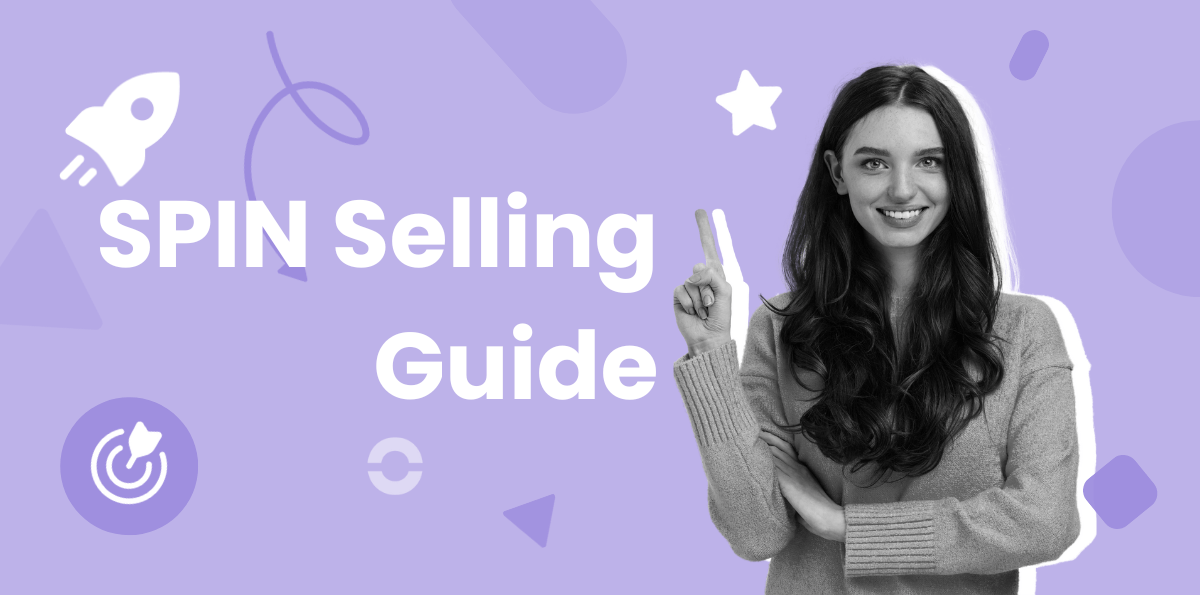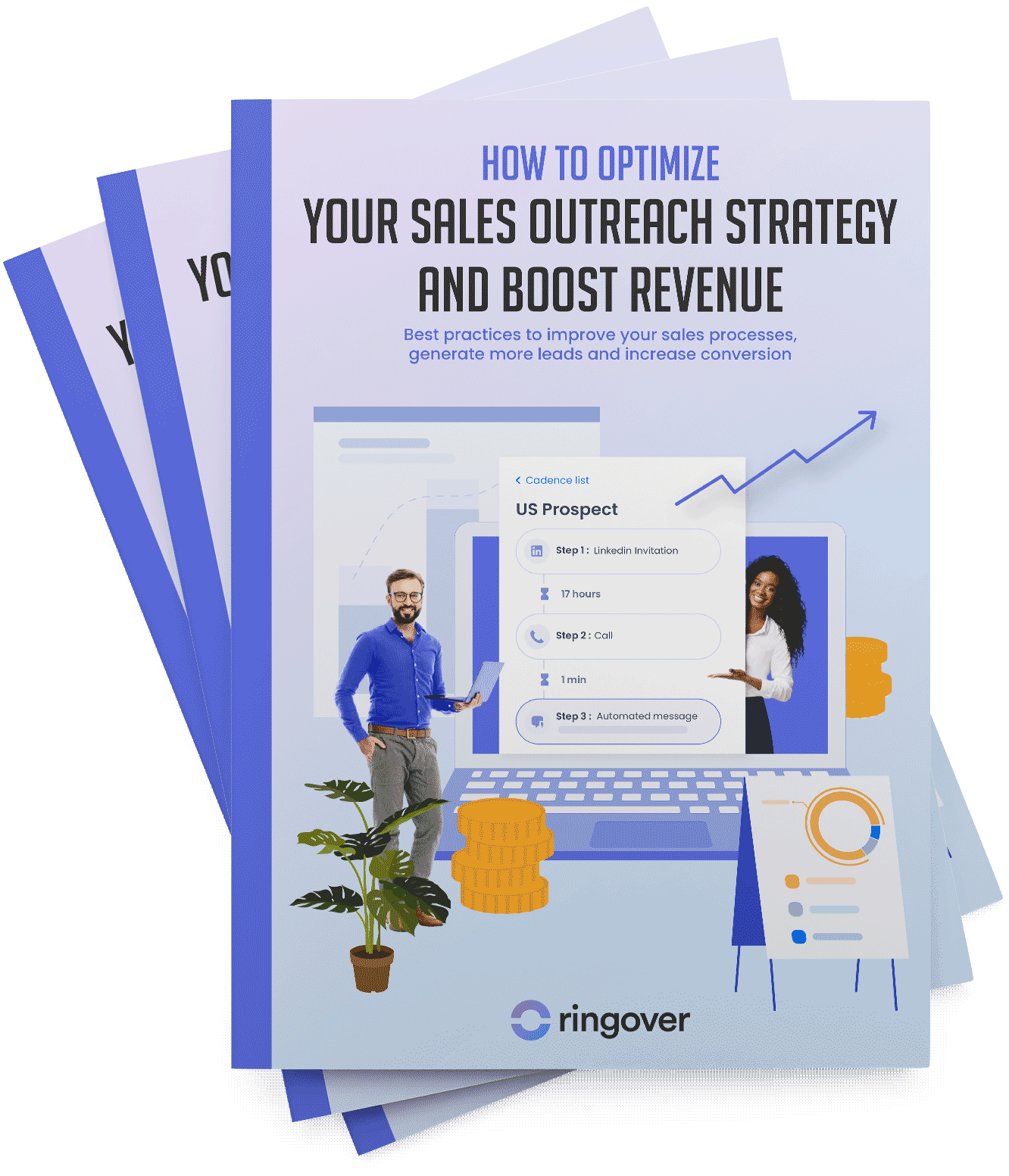Summary
The SPIN method is a sales technique that provides you with a conceptual framework which will guide you through enhancing your sales process. So, what does it actually involve? Are there any concrete examples of SPIN selling in action?
Optimize your prospectingWhat is the SPIN selling method?
The SPIN method is a sales technique used by sales teams to adapt their pitch to the needs of the prospect that they're talking to by asking the right questions.
This technique involves actively listening to your prospects and asking them the right questions, in order to squeeze as much information out of them as possible (painlessly, of course). By really showing an interest in the prospect at hand, sales agents can get a much clearer idea of what they need and how their company/product/solution can deliver it. In a way, it comes down to making the relationship between sales agents and future clients much more human-focused, making it less about a robotic transaction and more about building connections and customizing offers. It really embodies a client-centric approach.
The word “SPIN” here is an acronym which breaks down this sales method. It stands for: Situation, Problem, Implication, Need-Pay Off, which are the four phases that this technique is split into.
- Situation: Asking the prospect questions to get an idea of their situation/their company's situation.
- Problem: Listening and identifying the current problem that they're facing.
- Implication: What does the problem actually entail, what are its consequences?
- Need-Pay off: Hit the nail on the head by identifying needs and suggesting your product or service as the solution to these difficulties.
What is SPIN selling used for?
It's a simple concept: The SPIN method is used to identify new business opportunities by collecting plenty of relevant information and data on the potential client in question.
Putting questions to potential clients will help your sales agents to find the pinch points and select the service or product offer that best meets the prospect's needs. Analyzing the difficulties caused by your prospect's problem(s) will give you enough information to then put together a good, targeted pitch, in which you can highlight the need to immediately resolve the problem, of course, by using your products or services.
This isn't an aggressive technique, there is no hard selling, as it's instead about asking the right questions whilst helping to clear up any doubts and provide clear, informed advice. The aim is to collect information that you can then reuse to adapt the offer that you'll propose later, making it so well-suited to the prospect that they're certain to accept.
In his book, Rackham did some good sales myth-busting, and he also showed that the best salespeople weren't the ones who were best able to handle objections. In his study, he found that the best sales made simply featured fewer objections — a great example of prevention being more efficient than curing. This is one of the key principles of SPIN selling: preventing the objection fire so you don't need to put it out.
How many phases are there in the SPIN method?
As we've mentioned above, the SPIN method comprises 4 phases: Situation, Problem, Implication, and Need. So, to succeed in SPIN selling, you need to know which questions to ask at each step of the process. Let's take a look at some in further detail.
Questions adapted to the situation
To get started, ask more direct questions that will help you to understand the processes and strategies used by the client in their work and in their market. These questions will give you an idea of your starting point. Here are a few situational question examples:
- Which sales prospecting tools are you using?
- How many visits do you get on your website each month?
- How are you analyzing your web data?
Questions about problems
Now it's time to suss out any potential sales opportunities. Often, prospects aren't even aware that they've got a problem or that pinch points are downgrading their service's performance. This type of question will allow you to highlight the challenges that they're facing:
- How long does it take you to analyze data on emails?
- Are you happy with the number of suppliers you're currently using?
- How many communication channels can you handle at once?
- Is your CRM software fully meeting your needs at the moment?
Questions about implications
So, you've identified the problem. That's great, but now you need to determine its severity and how urgently it needs to be solved. For this, you need to share the implications incurred by this difficulty with the prospect, helping them to understand that they need to be realistic and try to find a way of resolving the situation as quickly and as best as possible. At this stage, you should ask questions like:
- How does the volume of calls taken influence the number of sales?
- What percentage of cold emails go unanswered?
- How do your employees react to not being able to have flexible working hours or work remotely due to a lack of tools?
Questions about needs
Once you've laid out your cards on the table and made your potential client realize the problem and everything that it entails, it's time to put forward an adapted offer. Having previously set out the inconveniences they're faced with, the prospect will now be able to see all of the advantages that you're offering more clearly, boosting the value of your brand. This is why the questions that you ask at this stage should focus on the added value of your products or services.
- What would happen if you could resolve your prospect's doubts sooner?
- Why is it so important to switch to a new solution?
- What would be the impact on your sales if your two main tools were made to be fully compatible?
The advantages of SPIN selling
Once you've understood the method and its effective techniques, it's time to look at the advantages of using this strategy in your sales process.
The main advantage of SPIN selling is that, thanks to the capacity to ask the right questions, it allows the sales agent to familiarize themselves with the prospect's situation in order to use all of this information to curate a customized offer that demonstrates the value of the product they're selling. From there, this technique allows for:
- Creating a more customized sales pitch;
- Increasing sales opportunities;
- Demonstrating empathy and active listening to the future client, which makes the purchasing process much more positive, which clients are likely to remember;
- Identifying the prospect's problems and being able to extract information from this;
- Building a more seamless pitch and focusing on attention to details;
- Creating a trusting connection;
- Preventing objections;
- Avoiding wasting time with unqualified prospects and really talking to the people who'll understand the value of your services.

Top tips for effective SPIN selling
Although there are different ways of implementing this technique, there are some good practices for applying this method.
Opt for open questions
You should ask questions that require more qualitative answers than just “yes” or “no”, and which will get you much more detail. This information will help you to better understand the challenges and opportunities for the company in question.
To avoid yes/no questions, simply ask open questions. A good example of this type of question is the typical, “Oh?”. After a response, invite the client to explain more. Don't rush straight onto the next question. Stay quiet for a few minutes to let your prospect fully explain their answer and share interesting details.
Don't hurry to fill silences
Following on from the previous tip, try not to over-fill silences. Don't dominate the conversation. This technique is based on the possibility that your client will share the information needed to detect problems and put together a customized offer. We can tend to respond to the prospect's comments with affirmations or personal experiences. However, in these cases, it can actually be counter-productive. Avoid taking over the conversation and instead focus on asking the right questions.
Rationalize your questions
It's true that this method may lead you to committing the error of overwhelming the prospect with questions during the first call. However, bear in mind that there are simple sales that let you close on a deal in just a few conversations, and then there are others which are far more complex. For this latter category, consider organizing your questions and splitting them over several calls.
If you don't do this, you risk turning the call into a long, long conversation during which the client may lose sight of the point, or be drowned in information about you and your product or service, and this can often result in a prospect who feels like their time is being wasted.
Practice makes perfect!
We've already covered scripts and sales pitches: practice really does make perfect. It's important to train yourself in the technique to make sure your sales strategy is a winner.
Thanks to Ringover and its whisper and call monitoring features, you can train agents while they're on the phone with the prospect. These monitoring and coaching features allow managers to listen in on calls and even join them to help agents without the prospect ever knowing.
All of these features, and many more, can be found in Ringover's cloud-based communications solution. Not tried it yet? Well, what are you waiting for? Start your free trial now and discover all of the possibilities offered by Ringover and our other solutions for sales prospecting.


